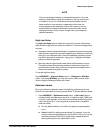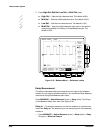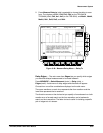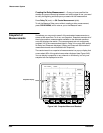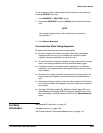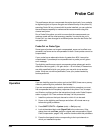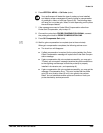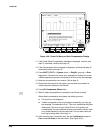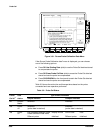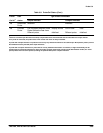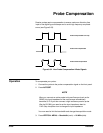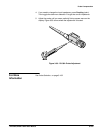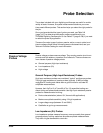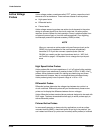
Probe Cal
TDS 620A, 640A & 644A User Manual
3Ć97
19. If desired, repeat this procedure beginning at step 1 to compensate for
other probe/channel combinations. But before you do so, be sure you
take note of the following requirements:
H Remember to first low frequency compensate any passive probe
you connect (see Prerequisites at the beginning of this procedure).
H Remember to connect all but simple passive probes to the oscilloĆ
scope for a twenty minute warm up before running Probe Cal.
The following topic contains information you should consider when using
input channels that have stored a Probe Cal.
Changing Probes After a Probe Cal
If a Probe Cal has never been performed on an input channel or if its stored
Probe Cal data is erased using the ReĆuse Probe Calibration Data menu
(discussed later), the oscilloscope displays Initialized status in its vertical
menu. It also displays initialized whenever you remove a probe from an
input.
If you execute a successful Probe Cal on an input channel, the oscilloscope
stores the compensation data it derived in nonĆvolatile memory. Therefore,
this data is available when you turn the oscilloscope off and back on, when
you change probes, etc.
When you install a probe or power on the oscilloscope with probes installed,
the oscilloscope tests the probe at each input. Depending on the probe it
finds on each input, it takes one of the following actions:
H If the probe has a complex oscilloscope interface (it can convey addiĆ
tional information, such as a unique identification number), the oscilloĆ
scope determines whether it is the same probe for which data was
stored. If it is, the oscilloscope sets status to pass; if not, it sets the
status to Initialized.
H If a probe has a simple oscilloscope interface, the oscilloscope can
usually determine if it has a different probe attenuation factor than that
stored for the last Probe Cal. It can also determine if the last Probe Cal
was for a probe with a complex interface. If either is the case, the probe
installed is different from that stored for the last Probe Cal. Therefore,
the oscilloscope sets the status to Initialized.
H If a probe has a simple oscilloscope interface and the probe attenuation
factor is the same as was stored at the last Probe Cal, the oscilloscope
cannot determine whether it is the same probe. Therefore, it displays the
ReĆuse Probe Calibration data? menu (see Figure 3Ć51).
Usage



